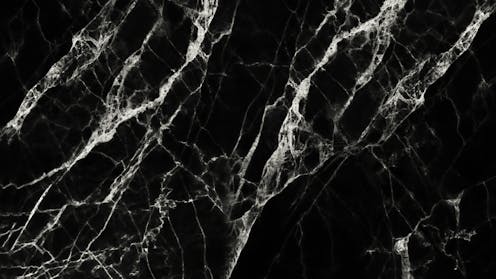Engineered stone is now banned. But how safe are the alternatives?
- Written by Renee Carey, Senior Research Fellow, School of Population Health, Curtin University

From today, engineered stone is banned in Australia in a bid to protect workers from inhaling deadly silica dust, which has long been linked to diseases such as lung cancer and silicosis.
The ban on the manufacture, supply, processing and installation of engineered stone comes after years of campaigning by unions, public health professionals, and doctors to protect the health of workers who cut and install engineered stone, the type used for kitchen benchtops.
So, many homeowners will now be looking for alternatives when building and renovating their homes.
But how safe are these alternatives? Here are some options and what they mean for the health of tradespeople who cut and install these products.
Remind me, how did we end up with a ban?
Silicosis is not a new occupational lung disease. For instance, it’s been reported since ancient times in stonemasons and miners who breathed in silica dust. In Australia, we’ve seen it for decades in construction and demolition workers.
However, until the past ten years or so, case numbers were low, both in Australia and internationally. That was until the introduction of engineered stone, a particularly potent source of silica dust. Some engineered stone contains 90% or more silica.
This led to an unprecedented re-emergence of the disease. An estimated one in four engineered stone workers has already developed silicosis as a result of their exposure. Many more will continue to be affected in the future.
In 2019, the Australian government set up a taskforce to deal with the growing issue of silica dust exposure. This set into motion a chain of events that resulted in Safe Work Australia in October 2023 recommending a ban on engineered stone, which state and territory work health and safety ministers adopted in December 2023.
The ban that starts today prohibits the manufacture, supply, processing, and installation of all engineered stone containing more than 1% silica.
There are some limited circumstances where work with engineered stone is still allowed (for instance, to repair or remove already installed engineered stone). However, this will be tightly controlled and regulated.
What are my options now?
There are many alternatives to engineered stone if you’re renovating your kitchen. While some also contain silica, the health risks for the tradespeople working with them are likely to be much lower than those we’ve seen with engineered stone.
Here are some alternatives:
timber is a classic benchtop option and comes in a wide variety of colours. Timber benchtops require some maintenance such as sanding and sealing. While timber does not contain silica, cutting timber produces wood dust. Overexposure to this dust causes cancer of the nasal cavity, lung diseases, as well as skin diseases, such as allergic dermatitis
stainless steel benchtops are also silica-free. They are highly durable and resistant to heat, stains and bacteria. There are some health hazards associated with stainless steel fabrication, mainly due to inhaling fumes from welding and airborne metals, such as chromium, nickel and manganese. However, there are many well-known control measures that can be used to reduce these risks
porcelain is a type of ceramic fired at very high temperatures and is a relative newcomer to the kitchen benchtop market. These benchtops are low maintenance and extremely durable. They are resistant to scratches, heat, stains and light. Some safety precautions are required as these benchtops still contain small amounts of silica (typically around 15%), but at levels much lower than in engineered stone
concrete benchtops can be customised to many different tastes and are heat resistant. Again, precautions are needed when working with concrete, as it contains around 30% silica. However, this is much lower than the 90% or more found in engineered stone
natural stone, such as marble or granite, is another classic benchtop option. Most are heat-resistant and durable. Marble contains a lower amount (under 5%) of silica than granite (25-60%). But both are safer options for workers than engineered stone
zero-silica engineered stone is a more recent introduction. These guarantee similar designs and durability as their (now-banned) predecessors. Instead of silica, these products often contain alternative raw materials such as recycled glass mixed with resins and pigments. We are yet to see how much safer these alternatives are than engineered stone.
There are clearly pros and cons to any benchtop choice. Each also comes with its own risks to the workers who manufacture and install them. However, the risks from these alternatives are potentially magnitudes lower than those we’ve seen with engineered stone. In most cases, these risks are also well-known, well-managed and well-controlled, unlike with engineered stone.
It’s also important to remember these products, including engineered stone, pose no risk to homeowners once they’re installed.
How about other exposures?
While this ban is an incredible step forward and a win for public health, engineered stone is only part of the problem. We still see significant silica exposure in other industries, including construction, mining and tunnelling.
Stronger regulation of all materials containing silica dust will come into place in September this year. These will include the requirement for all processing of silica-containing substances to be controlled using water, dust extraction or ventilation where practical. Everyone who works with silica-containing products in a way deemed to be high risk will also need to be trained and have regular health checks.
We hope the momentum seen today in banning this dangerous product continues, and the health and safety conditions for all workers exposed to this deadly dust are improved.
Authors: Renee Carey, Senior Research Fellow, School of Population Health, Curtin University
Read more https://theconversation.com/engineered-stone-is-now-banned-but-how-safe-are-the-alternatives-232488



